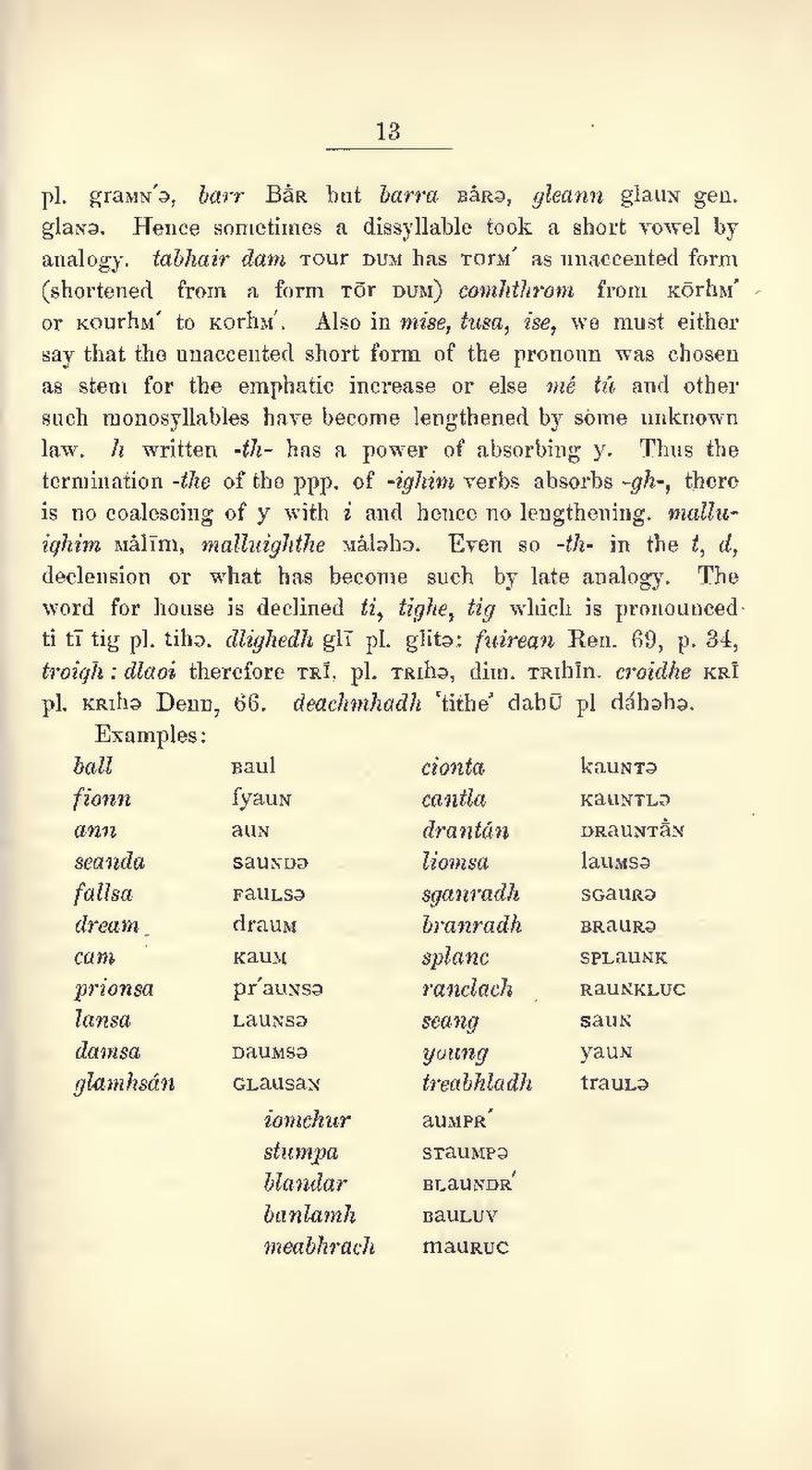13
pl. graᴍɴ′ə, barr Bǡʀ but barra ʙȧʀə, gleann glauɴ gen. glaɴə. Hence sometimes a dissyllable took a short vowel by analogy. tabhair dam ᴛour ᴅᴜᴍ has ᴛorᴍ′ as unaccented form (shortened from a form ᴛōr ᴅᴜᴍ) comhthrom from ᴋōrhᴍ′ or ᴋourhᴍ′ to ᴋorhᴍ′, Also in mise, tusa, ise, we must either say that the unaccented short form of the pronoun was chosen as stem for the emphatic increase or else mé tú and other such monosyllables have become lengthened by some unknown law. h written -th- has a power of absorbing y. Thus the termination -the of the ppp. of -ighim verbs absorbs -gh-, there is no coalescing of y with i and hence no lengthening. malluighim ᴍȧlīm, malluighthe ᴍȧləhə. Even so -th- in the t, d, declension or what has become such by late analogy. The word for house is declined ti, tighe, tig which is pronounced ti tī tig pl. tihə. dlighedh glī pl. glitə: fuirean Ren. 69, p. 34, troigh : dlaoi therefore ᴛʀĪ, pl. ᴛʀɪhə, dim, ᴛʀɪhīn. croidhe ᴋʀĪ pl. ᴋʀɪhə Denn, 66. deachmhadh ‘tithe’ dahŪ pl dáhəhə.
Examples:
| ball | ʙaul | cionta | kauɴᴛə |
| fionn | fyauɴ | cantla | ᴋauɴᴛʟə |
| ann | auɴ | drantán | ᴅʀauɴᴛǡɴ |
| seanda | sauɴᴅə | liomsa | lauᴍꜱə |
| fallsa | ꜰauʟꜱə | sganradh | ꜱɢauʀə |
| dream | drauᴍ | branradh | ʙʀauʀə |
| cam | ᴋauᴍ | splanc | ꜱᴘʟauɴᴋ |
| prionsa | pr′auɴꜱə | ranclach | ʀauɴᴋʟᴜᴄ |
| lansa | ʟauɴꜱə | seang | sauɴ |
| damsa | ᴅauᴍꜱə | young | yauɴ |
| glamhsán | ɢʟauꜱaɴ | treabhladh | trauʟə |
| iomchur | auᴍᴘʀ′ | ||
| stumpa | ꜱᴛauᴍᴘə | ||
| blandar | ʙʟauɴᴅʀ′ | ||
| banlamh | ʙauʟᴜᴠ | ||
| meabhrach | mauʀᴜᴄ |
